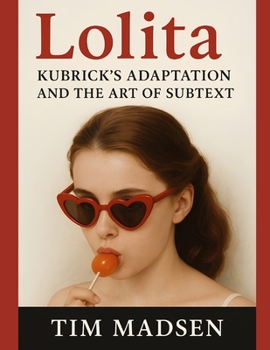Lolita: Kubrick's Adaptation and the Art of Subtext
Lolita: Kubrick's Adaptation and the Art of Subtext offers a penetrating exploration of one of cinema's most provocative and misunderstood films. Stanley Kubrick's 1962 adaptation of Vladimir Nabokov's Lolita is a masterclass in visual implication, irony, and restraint-crafted under the shadow of censorship and controversy, yet rich with layered meaning.
In this ten-part critical study, the film is examined not simply as an adaptation, but as a cinematic argument-one that transforms Nabokov's literary provocation into a work of subtextual complexity. From Kubrick's delicate navigation of the Production Code to James Mason's portrayal of the morally ambiguous Humbert Humbert, and from Peter Sellers' shapeshifting Quilty to Sue Lyon's iconic and unsettling performance, this book investigates how performance, framing, structure, and silence speak louder than exposition.
Through close analysis of mise-en-sc ne, narrative construction, and the cultural context of 1960s America, Lolita: Kubrick's Adaptation and the Art of Subtext reveals how the film critiques the very desires it depicts-and how its legacy continues to challenge viewers and scholars alike.
Meticulous yet accessible, this is a vital resource for readers interested in adaptation studies, Kubrick's filmography, visual storytelling, and the ethics of representation.





